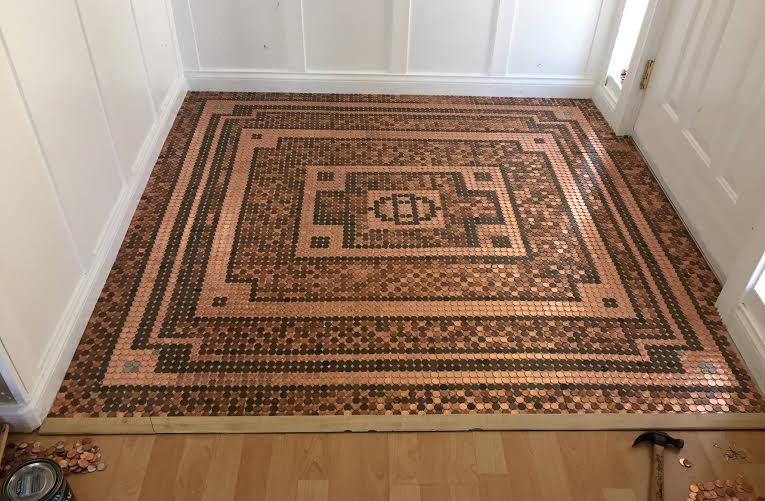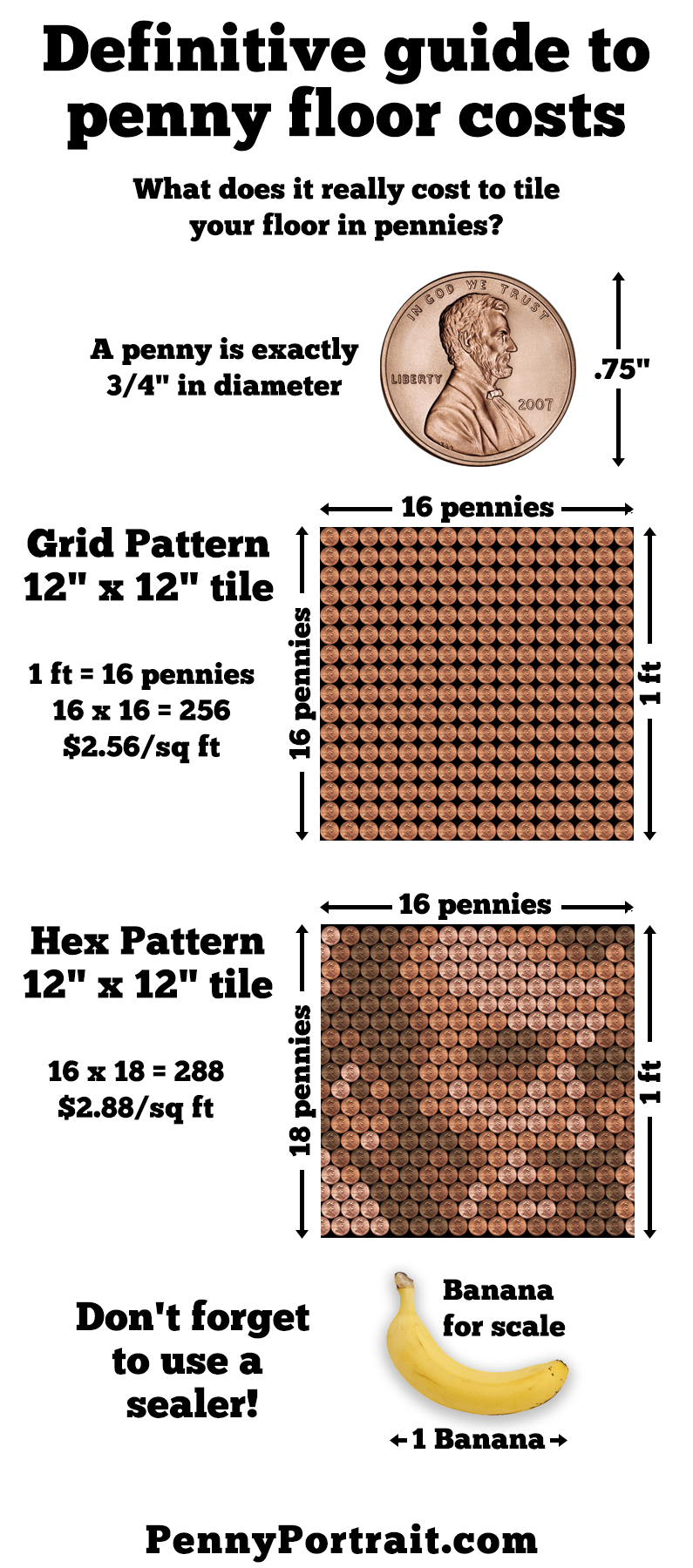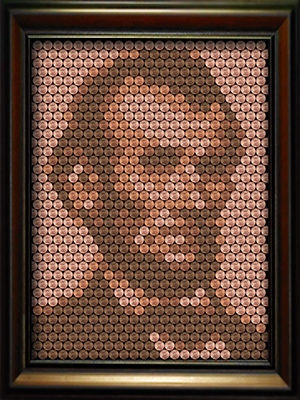The definitive guide to penny floor costs
What does it really cost to tile your floor with pennies?
So penny floors are a thing. If your social media explorations take you to the realm of Reddit, you’ll undoubtedly be exposed to numerous examples of people who have created mosaic masterpieces out of these tiny copper cobblestones. It’s an audience favorite and not hard to see why. Penny floors can be absolutely stunning.
Photo Credit: Kelly Graham (Click on photo to visit her penny floor tutorial.)
Inevitably, the questions always get asked…
What does it actually cost to make one of these? Is it cheaper than actual tile? Will it hold up to wear?
Tile price ranges can be significant, depending on the style and material. That said, a typical square foot of ceramic tile runs anywhere from $1.50 – $2.00. So what exactly does one square foot of pennies cost?
Many people have attempted to answer this question using a variety of mathematical equations discussing quite literally the best way to cram a round peg into a square hole. At the end of the day, sometimes a picture is worth a thousand words. With that in mind, I present to you the definitive guide to penny floor costs.
So, you’re saying a penny floor could make cents?
On strictly a cost basis, traditional tile floors are probably a bit cheaper. This is epecially true when you consider the labor costs involved. Not to mention, it’s imperative you add grout and seal the floor. (You did remember to use a sealer, right?)
If you are looking for the opulance and elegance of copper however, pennies are actually a fairly logical choice. Consider the following. Coinflation.com currently lists the value of the actual copper metal in a pre-1982 penny at close to 2 cents/penny. In other words, through the marvel of government inefficiency, the U.S. Mint has subsidized your metal floor purchase on a 1 to 1 basis.




“the U.S. Mint has subsidized your metal floor purchase on a 1 to 1 basis.”
Of course, this is only true with pre-1982 coins. Pennies produced since that date are only 2.5% copper. The majority is zinc. So, the amount of work you’d have to invest into sorting your pennies to find predominantly copper ones effectively negates any “subsidy” value and inflates the overall cost of the project.
maurymccoy on February 11, 2019 at 3:07 pm (Edit)
Absolutely correct. If you wanted the heavier pre-1982 cents there’s a bit of work involved, but honestly if you sealed the pennies there is probably very little difference visually. (Also, if you’re making any kind of pattern, chances are the shinier pennies will be post 1982.)
That said, I’ve run into groups of folks commonly called “penny hoarders” who have rooms full of “true” copper pennies waiting to arbitrage the price of that metal some day.. Folks quite literally have Scrooge McDuck bags of pennies in spare rooms filled with pennies.
Someone even markets a penny sorter to do the hard work of picking those pennies out. Check it out.
https://youtu.be/Xu0SWe_VUlQ?t=66